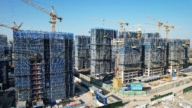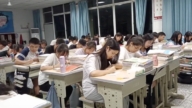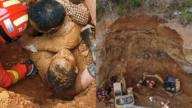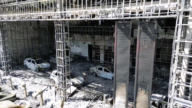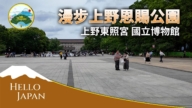【新唐人2012年8月27日讯】近期,河南开封计划“千亿再造汴京”,打算将开封市的老城区改造成近20平方公里的旅游区,重现北宋“汴京”。而两年前开始,在大陆西部和东部地区,那些被外媒注意到的大量新兴豪华城市,由于建筑物大量空置,被称为“空城”或“鬼城”。现在媒体关注:开封是否会成为下一个造城冲动下的“空城”?下面听听专家怎么说?
开封市政府提出的“千亿再造汴京”计划,是想借助开封市作为宋代古都的历史资源,主攻文化旅游。但是据媒体报导,开封的这项“ 复古”计划,仅拆迁费就耗资1000亿元,古城区8万居民将被迫拆迁,媒体认为,这对年财政收入不足50亿元的开封市而言,无疑将是一场豪赌。
中国艺术研究院学者吴祚来指出,地方政府很多不是用一种平常心来对待古建筑和传统文化,更多的是在利用。拆除民房,建设虚假古迹,其实破坏了另外一种生态,就是百姓生活的生态。老百姓已经在这里住了几百年了,当局对他们强行拆迁,这侵犯的是人权。官员要得到的其实是他的经济利益,他并不是为了复古。
中国艺术研究院学者吴祚来:“一个领导在这里三五年,通过强拆,卖地皮,假文物的建筑,来与开发商达成一个联盟,赶快把这一笔钱拉到。这是他们最根本的动机和目地。真正的维护这个城市的建筑,他是有长远的规划,他不是强行的剥夺别人生存权的方式,一夜之间就把一个地方毁了,然后几年之内,建成一个假的文物新城。”
文化评论家叶匡正也指出,当局打着“复兴古文化”的旗帜,其实眼睛盯着“卖地”的收入。
文化评论家叶匡正:“其实现在很多地方政府,因为各地地价大涨,很多商家可能看中了一些古城,旅游资源比较丰富的这些城市的土地资源,所以以各种名义,开封(政府)看中的其实更多的是土地带来的收入。”
据《中国经营报》报导,几年前,开封以治理“龙亭风景区”周边环境的名义,开始动迁这个区域﹔最近两年,“迪臣置业”公司已经在这里开发了十几栋高端住宅。
但是报导还说,在开封“鼓楼”原址,看到一个深约15米左右的大坑。“鼓楼”是开封标志性的古建筑,现在,原来的鼓楼基座已经被搬走。据说这个大坑里面要建造一个巨大的地下商城。这种通过毁坏一个城市的历史文案制造的是赝品,没有真正的文化价值。
两年前,美国传媒在网上展示了一些他们称为“鬼城”的卫星图片,因为城市中大量的住宅和街道空空荡荡,人烟稀少,令人疑惑。据了解,近年来,大陆许多地方政府为了追求GDP等政绩,制造了许多无人居住的“空城”。
如,河南郑东新区“远景概念”规划范围150平方公里,整个工程将近2000亿,但房屋空置率达90% ﹔而被誉为“亚洲最大别墅区”的天津“京津新城”,总规划面积25000亩,可供50万人生活、居住、娱乐。5年来,开发商在这片土地上营建起1000座高端别墅,但这还不及“京津新城”总体规划开发量的1/10。目前入住率只有10%。
那么,开封的“造城”计划到底是惠民工程还是政绩工程?民众发出了质疑,认为:开封当局的做法不切实际,是“没有魂的复古”。
采访编辑/秦雪 后制/钟元
Kaifeng plans to restore historical outlook of Song Dynasty at
100 billion Yuan, speculated to produce another “ghost town”.
Recently, the city government of Kaifeng in Henan province
presented a restoration project costing over 100 billion Yuan.
The project plans to transform its old town
into a 20-square-kilometer tourism zone.
This is to restore the historical outlook of “Bianjing” city,
the capital of Northern Song Dynasty.
For the past two years, foreign media have reported that
many Chinese cities where buildings are newly developed
are seldom used so that they look like “ghost towns”.
Similarly, Kaifeng’s project has been speculated
to produce the next “ghost town”.
Another unrealistic project of city building.
Kaifeng’s project of “restoration of Bianjing outlook”
aims to develop tourism with the city’s historical background
as the capital of the Song Dynasty.
However, according to media reports, just the demolition
fee of this “restoration” project will cost as much as 100 billion.
More than 80,000 residents of old town will be forced
to move.
Some media report remarked that the project is an
extremely dangerous gamble for Kaifeng city.
Their annual revenue is less than 5 billion Yuan.
Scholar of China Academy of Art, Wu Zuolai remarked that
most local governments wanted to benefit from ancient
architecture and traditional culture rather than appreciating their historical value.
Replacing civilian houses with fake historic sites actually
destroys the social ecology of civil life.
Most residents’ families have lived there for hundreds of years.
Demolition of their houses is violation of human rights.
Wu said what the Chinese Communist Party(CCP) officials
real aim is economic value, not restoration of history.
(Wu Zuolai, scholar of China Academy of Art): “Each
municipal leader will stay in his position between 3-5 years.
They try to earn money in this short period by collaborating
with developers in demolishing civil houses, selling lands
and building fake historic sites. Money is their ultimate goal.
A real restoration of historical architecture will not be like this.
It won’t destroy an area by depriving local residents of their
basic rights to build a fake ‘historic town’ on their land.”
Cultural commentator Ye Kuangzheng also remarked that
while purporting to “restore traditional culture”, the CCP
only really cares about the income from land sales.
(Ye Kuangzheng): “Since the price of land has
sharply increased recently,
many developers are interested in the land from
the cities with tourism resources such as historic sites.
Therefore local governments try to sell those lands
in different ways.
In fact Kaifeng government also wants to earn
this income from land sales.”
According to China Business News,
the city government of Kaifeng started to demolish
civil houses in Longting Scenic Area several years ago in the name of “improving environmental quality”.
In recent two years, a corporation called Dichen Group Ltd
has developed tens of luxury homes in the area.
The report also revealed that a big hole of 15-meter depth
can be seen at the former site of Kaifeng’s Drum Tower.
The Drum Tower is a signature ancient architecture of Kaifeng,
but its foundation has been removed.
It is reported that the city will build a huge underground
mall in the hole below the tower.
Ye Kuangzheng said that such acts of destroying real historic
sites will only create fake productions with no cultural value.
Two years ago, American media posted on their websites
some satellite pictures of a so-called “ghost town”.
In the picture, most houses and streets are empty with
few visitors, which looks confusing.
It is believed that many local governments in China mainland
had built such “ghost towns” in recent years.
They wanted to generate nice-looking “GDP” numbers.
As an example, the “perspective concept” project in
Zhengdong New District of Henan covers 150 square kilometers at a cost of 200 billion Yuan.
However, more than 90% of the houses are still empty.
The Jingjin New City in Tianjin,
which is called the “largest villa area in Asia”,
covers a planning area of 25,000 properties
for 500,000 residents to move in.
However, only 1000 luxury homes were built in five years,
less than one tenth of the development planning numbers.
Actually only 10% of the houses have been lodged
with residents.
Chinese civilians have questioned whether Kaifeng’s
“restoration project” will benefit civilians. Is it only an image project?
Many of them believe that the project is unrealistic,
attempting to restore the historical image without traditional values within.


